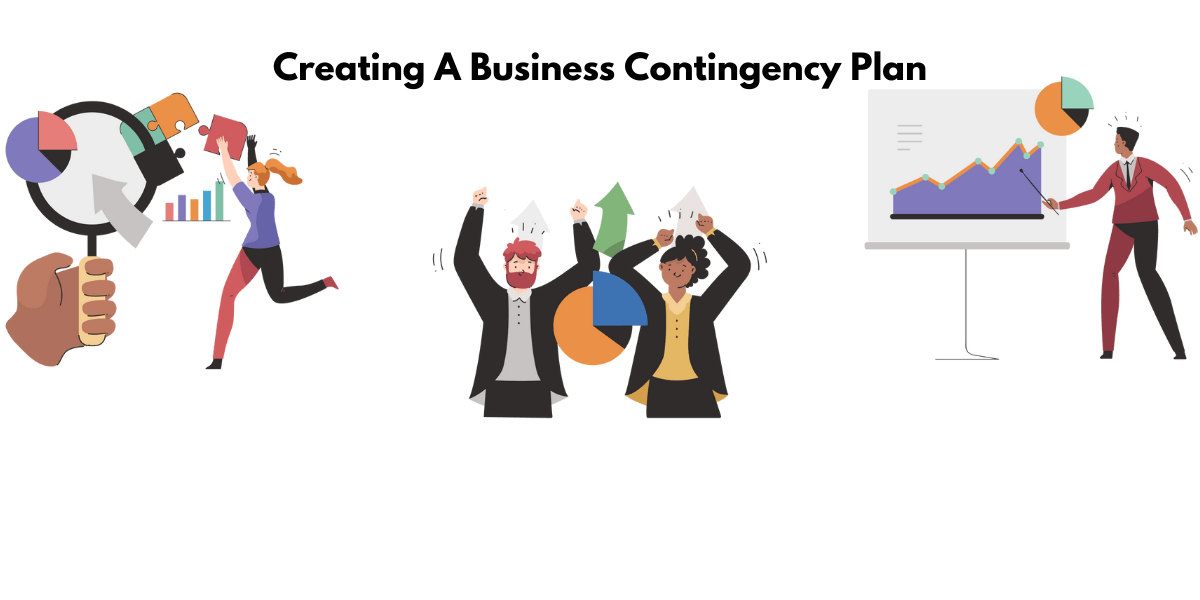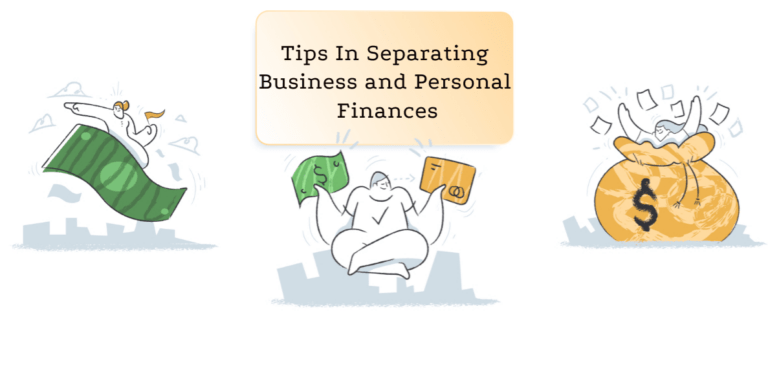Business Contingency Plan: How To Prepare For Business Disasters
Business Contingency Plan
No one likes to think about disasters, but they can and do happen. That’s why having a contingency plan for your business is important.
The definition of contingency planning is a course of action you will take in the event of a disaster. It should cover everything from natural disasters to power outages and data breaches.
Creating a contingency plan may seem daunting, but we promise it’s not as difficult as it seems. And once you have one in place, you’ll sleep better knowing your business is prepared for anything.
In this post, we’ll walk you through everything you need to know about creating a contingency plan template for your business.
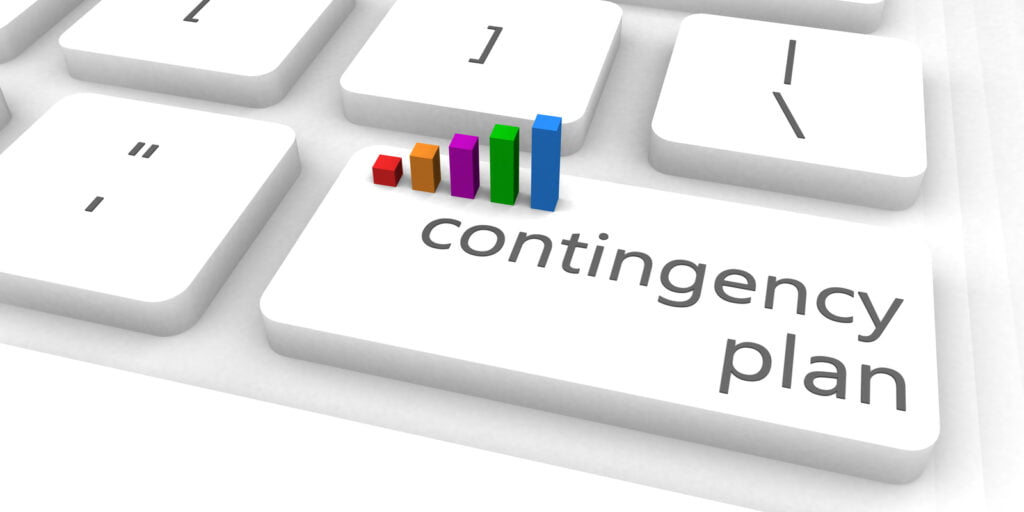
What is contingency planning for a business?
What is contingency planning? It is a document that outlines how a business will continue to operate in the event of an unexpected disaster. The purpose of a contingency plan is to help the business recover from a disruptive event and return to normal operations as quickly as possible.
Many potential disasters could disrupt a business, such as a fire, flood, power outage, or cyber attack. While it is impossible to plan for every possible scenario, a well-crafted contingency plan can help a business minimize the impact of an unexpected event and get back on track quickly.
When should you develop a business contingency plan?
It is important to have a business contingency plan in today’s unpredictable economic climate and competitive landscape. Having a Plan B can protect the health and safety of employees and customers, minimize interruptions and financial loss, and allow businesses to resume operations quickly if unforeseen circumstances arise.
It is also important to note that your business contingency plan should be reviewed regularly, as it can change as your business evolves. Set up a time every quarter or year to review and modify it as necessary.
Why do businesses need a contingency plan?
A business contingency plan is important because it helps businesses prepare for and manage the effects of disruptive events. Disruptive events can include natural disasters, pandemics, cyberattacks, data breaches, and other unforeseen circumstances that can cause significant disruptions to business operations.
A well-crafted contingency plan can help businesses minimize the impact of disruptive events, protect critical assets and personnel, maintain customer confidence, and ensure the continuity of operations.
A contingency plan can help you minimize the impact of unexpected events and keep your business running smoothly
A contingency plan can help minimize the impact of unexpected events by ensuring you are prepared for any situation. It can include steps such as having an emergency contact list, creating a backup plan for key functions, and developing procedures for handling crises.
By having a well-crafted contingency plan in place, you will be better able to respond quickly and efficiently to any unexpected event. This will help minimize its impact on your staff and the overall health of your company while also helping to ensure that business operations continue smoothly without disruption.
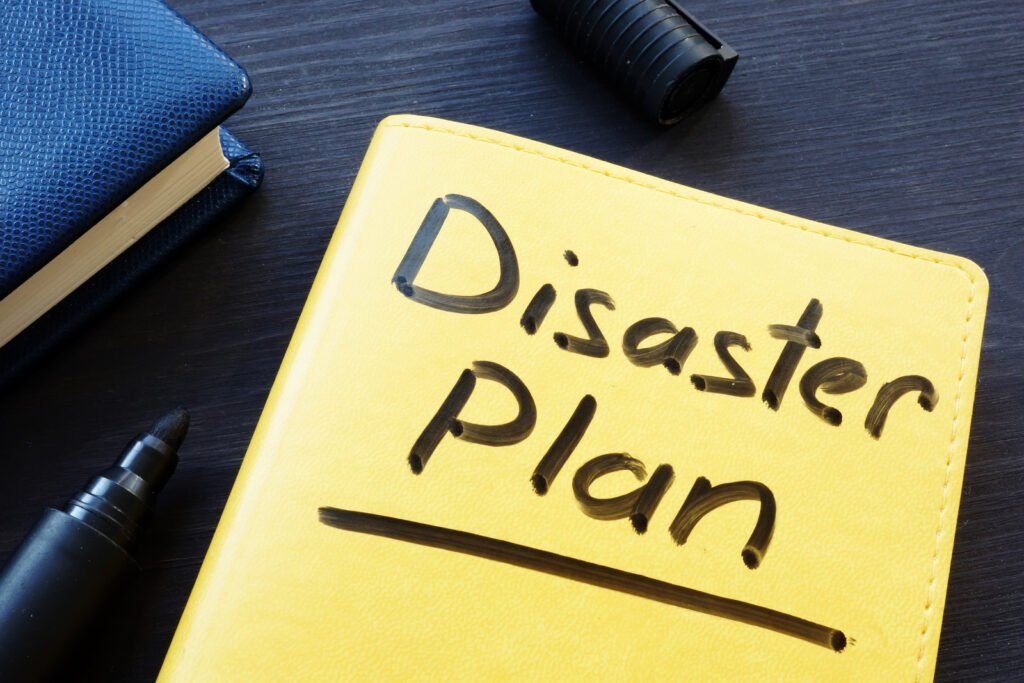
A contingency plan can help you plan for possible disasters and ensure that your business is prepared to handle any situation
A contingency plan is an important tool for businesses of all sizes. A well-developed contingency plan can help you anticipate and prepare for potential disasters, ensuring your business can continue operating despite any challenges.
A contingency plan can help your business maintain its productivity and minimize downtime in the event of an emergency
A contingency plan can help maintain productivity and minimize downtime in an emergency by providing clear instructions on what resources to use and actions to take.
By following a well-designed contingency plan, businesses can quickly resume operations after a disruptive event occurs, saving time and money as they are prepared for any unforeseen circumstances. Additionally, having a plan in place can alleviate some of the stress of an emergency.
A contingency plan can help your business stay on track and avoid losing profits in the event of an emergency
A contingency plan can help your business stay on track and avoid losing profits in the event of an emergency by providing you with a framework to follow to minimize the impact of any unforeseen events. It should include steps such as identifying potential risks, developing strategies to address them, and establishing procedures for taking action in an emergency. Additionally, it is important to have a plan that includes backup resources such as staff, suppliers, or funds that can be used if needed. This will ensure that your business can continue operating without disruption while maintaining profitability.
A contingency plan can help your business maintain its reputation and avoid negative publicity in the event of an emergency
A contingency plan can help protect the reputation of a business and avoid negative publicity in the event of an emergency by providing a clear outline of how to respond to unexpected events.
By having a plan in place, a company can effectively communicate how negative events are to be navigated and responded to, minimizing the risk of reputation damage. Additionally, a contingency plan can reduce the risk of financial loss due to unforeseen events such as power outages or industrial action.
A contingency plan can help your business stay organized and avoid confusion in the event of an emergency
A contingency plan can help your business stay organized and avoid confusion in an emergency by providing a roadmap for action. By having an effective plan in place, you can ensure that everyone knows their role during an emergency and that production will continue as normal despite disruptions. Additionally, having a plan in place will help minimize loss from unforeseen circumstances and improve morale among staff members. Furthermore, it allows you, as the business owner, to make better decisions quickly while moving into recovery mode. Finally, having a contingency plan helps build loyalty and trustworthiness with both customers and employees by demonstrating that you are prepared to handle any challenges that may arise in the future.
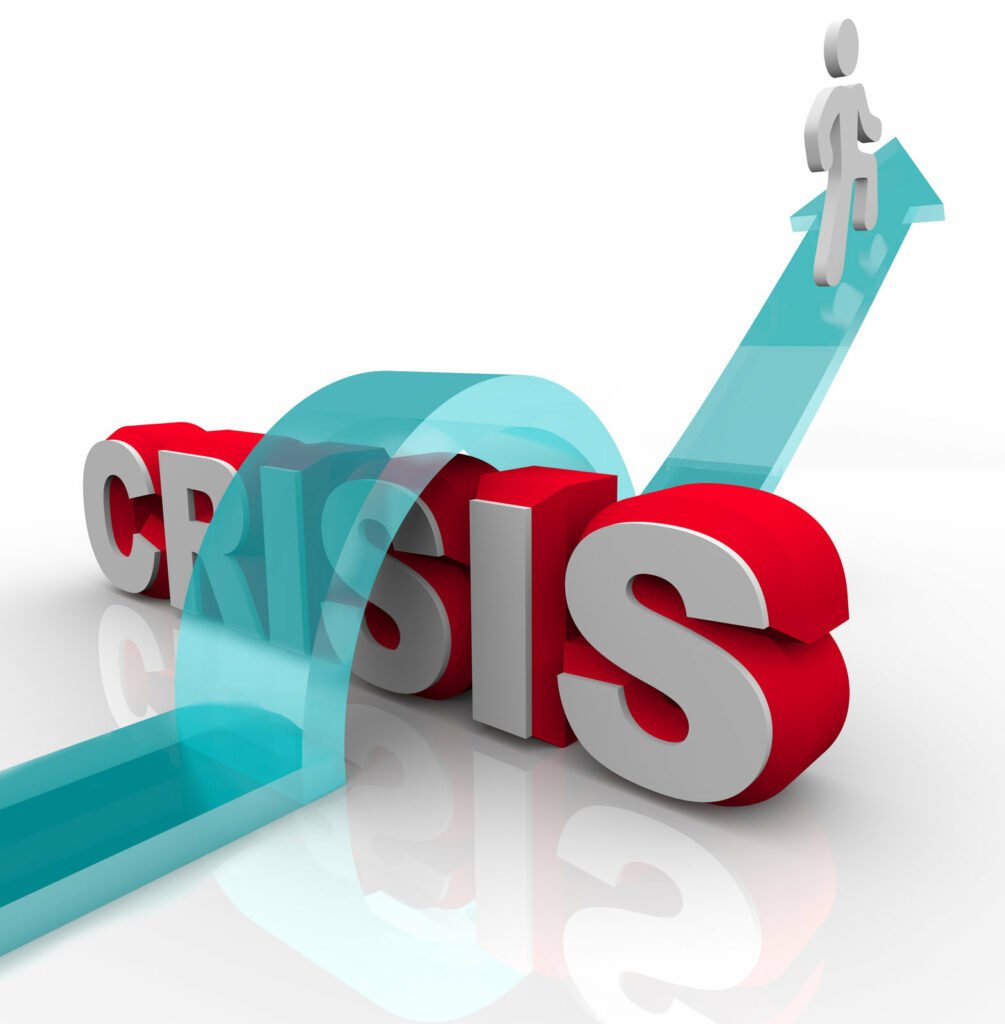
A contingency plan can help your business ensure that it is adequately prepared for any potential emergency
A business contingency plan is a set of actions and procedures to prepare a company for unexpected events.
A good contingency plan can help prevent a business from falling apart when unforeseen events occur. It should include strategies for dealing with potential challenges, such as increased workload, loss of key staff members, or an unexpected expense. The plan should also include steps for maintaining productivity and minimizing the impact on staff and the company’s overall health. A well-prepared business will be able to respond quickly and effectively in times of crisis so that minimal damage is done to its operations or reputation.
A contingency plan can help your business stay safe and avoid putting its employees and assets at risk in the event of an emergency
A contingency plan helps a business prepare for unforeseen events, such as natural disasters, technological failures, or employee absences.
By having a plan in place, businesses can minimize losses from disruptions in operations and production; improve loyalty and trustworthiness with employees and customers; keep everyone calm in an emergency, and quickly move into recovery mode after a significant event.
A contingency plan can help your business save money by avoiding unnecessary expenses in the event of an emergency
A contingency plan can help a business save money by providing a framework for dealing with unexpected events. This includes preparing for potential disasters, such as natural disasters or equipment failures, and outlining the steps to respond.
Having a well-crafted contingency plan in place can help minimize the impact of unexpected events on a business. It can reduce costs associated with repairing damage or replacing lost or damaged assets and limit any financial losses due to disruption in operations or loss of customers.
How do you create a business contingency plan?
There are a few key steps to creating an effective contingency plan:
Step 1: Identify and prioritize resources
The first step in creating a business continuity plan is identifying and prioritizing resources. This includes identifying which resources are critical to the business and which can be replaced or substituted if necessary. It is also important to consider how quickly these resources can be accessed during a disaster.
Step 2: Prioritize risks
After you’ve identified the risks that could impact your business, it’s time to prioritize them. Not all risks are created equal, and some will be more likely to occur than others. To prioritize risks, you’ll need to consider both the likelihood of an event occurring and its potential impact on your business.
Step 3: Identify key connections
After you’ve identified the key components of your business that need to be protected, the next step is to identify any key connections. This includes supplier contracts, employee contact information, and IT systems. Identifying these key connections ensures that your business can still function even if one or more are disrupted. This step is especially important for businesses that rely heavily on technology or have complex supply chains.
Once you’ve identified the key connections, the next step is to create a plan to maintain them in the event of a disaster. This plan should include alternate suppliers, redundant systems, and contact information for key employees. Having a plan in place can ensure that your business can still function even if one or more of its key components is disrupted.
While no one likes to think about disasters, they can happen anytime. By creating a business contingency plan, you can ensure that your business is prepared for anything that comes its way.
Step 4: Draft a contingency plan
After you’ve identified the potential risks to your business, it’s time to start drafting a contingency plan. This plan should outline how you’ll keep your business running in a disaster.

Step 5: Share the plan with your team
The next step in creating your business contingency plans is to share it with your team. This ensures everyone knows what to do in a disaster and helps build a sense of team cohesion and unity.
Sharing your plan with your team allows you to get feedback and input on how the plan could be improved. This is important in ensuring your plan is as effective as possible.
Once you have created and shared your business continuity plan, it is important to review it regularly. This will ensure that it stays up-to-date and relevant to your business.
Step 6: Develop contingency plans for each risk
This includes identifying the potential impact of the risk, who will be responsible for responding, and what resources will be required. By developing specific plans for each risk, you can ensure that your business is prepared for anything that might come its way.
Step 7: Identify who can run the business in your absence
If you are the sole proprietor of your business, it is especially important to have a contingency plan in case of your absence. Identify a trusted individual who can step in and run the business in your stead, and ensure they are familiar with all aspects of the business. This person should be able to make decisions in your absence and keep the business running smoothly until you can return.
It is also important to have a plan for what to do in the event of a natural disaster or another emergency that could disrupt business operations. Ensure you have a backup location for your business and that all employees know where to go and what to do during an evacuation. Have a plan for how you will communicate with employees and customers if cell service is down or the power is out.
By having a plan in place for dealing with business disruptions, you can minimize the impact on your business and ensure that operations can resume as quickly as possible.
Step 8: Maintain contact details handy
Maintaining contact details of key personnel is an important part of any contingency plan. In a disaster, getting in touch with employees, customers, and suppliers may be difficult or impossible. Having a list of contact information for key people can help ensure that your business can stay in communication with the people it needs to.
Step 9: Share, modify and share the plan again
The next step in creating a business contingency plan is to share it with employees, clients, and other key stakeholders. After getting feedback and making modifications, the plan should be shared again to ensure everyone is on the same page. This step is crucial to ensure everyone knows what to do in a business disaster.
Step 10: Put it into practice
The final step in creating a project contingency plan is to put it into practice. This means regular review and updating of the plan and training employees on what to do in an emergency. Having a well-rehearsed plan can minimize the impact of a business disaster and keep your company running smoothly.

Examples of business risks and their mitigation strategies
As a business owner, you always seek ways to mitigate risks. But what exactly is the risk?
Risk can be defined as the probability of an event hurting your business.
Businesses face many different types of risks, but some common examples include financial, operational, and compliance risks.
Fortunately, there are also many different mitigation strategies that you can use to protect your business from these dangers.
Some common risk mitigation strategies include insurance, diversification, and hedging.
Natural disasters
Natural disasters can have a devastating impact on businesses of all sizes. From hurricanes and floods to earthquakes and wildfires, natural disasters can destroy infrastructure, disrupt supply chains, and cause widespread damage. In the wake of a natural disaster, businesses must quickly adapt and implement contingency plans to minimize the impact on their operations.
There are a variety of risks that businesses must consider when preparing for natural disasters. The first step is identifying the most relevant risks to your business and operations. Once you have identified the risks, you can develop a mitigation plan.
Man-made disasters
Man-made disasters can include accidents, security threats, sudden changes to revenue or personnel, and more. For example, businesses at risk for environmental accidents–particularly spills of hazardous materials–should have a plan detailing their response actions. This includes developing strategies such as evacuating employees from the area and containing the spillage as quickly as possible. Additionally, businesses can mitigate the impact of man-made disasters by ensuring their employees are trained to respond in an emergency.
Cyber threats
As businesses become increasingly reliant on technology, they are also becoming more vulnerable to cyber threats. These threats can come from malware, viruses, phishing scams, and hacking. While there is no guaranteed way to prevent all cyber threats, there are some mitigation strategies that businesses can adopt to reduce the risk of being attacked.
One strategy is to educate employees about cyber security and what they can do to protect the company’s data. This includes teaching them how to spot phishing emails and warning them about clicking on links from unknown sources. Another strategy is to invest in cybersecurity software and hardware, such as firewalls and intrusion detection systems. Finally, businesses should create a contingency plan in case of a cyber attack. This plan should include steps to recover data and keep the business running in the event of an attack.
While no one can completely prevent cyber attacks, by taking these steps, businesses can reduce their risk and be better prepared if they are targeted.
Loss of key staff
The risk of losing key staff refers to the possibility that key employees may leave their positions, causing major disruptions in the company.
To mitigate this risk, organizations should have a contingency plan in place so that other departments can pick up the slack if a key staff member leaves. This includes succession plans for any important positions and ensuring that other staff members are trained to take over important tasks. Additionally, organizations need to encourage collaboration between departments so they can better understand how their work impacts others. This will help them develop more comprehensive plans for mitigating risks associated with losing key staff members or other disruptions in business operations.
Malfunction of systems
The risk of malfunctioning systems in business is that critical systems such as IT, power, and supply chains could fail to deliver the necessary resources needed to run a business. This could result in delays in product releases or customer service issues, among other impacts.
To mitigate this risk, companies should ensure they have plans in place to address any potential system failures that may occur. These should include backup systems, alternative power sources, and contingency procedures for addressing any disruptions that may arise from these failures. Additionally, teams across different departments must work together on these plans to respond quickly if necessary.
Supply chain disruptions
Supply chain disruptions can majorly impact businesses, especially if they are not prepared for them. There are many supply chain disruptions, from natural disasters to political unrest. Businesses need to be aware of the risks and have contingency plans to minimize the impact on their operations.
One of the most common types of supply chain disruptions is natural disasters. Businesses must be prepared for a hurricane, earthquake, or another major event that could damage their facilities or disrupt transportation. They should have plans in place for how to keep their operations running in the event of a disaster, including alternative sources of supplies and transportation.
Illness of owners
Illness is the risk of owners and operators of small businesses, as they are more likely to be exposed to hazardous conditions or contagious diseases than employees in larger companies.
To mitigate this risk, owners and operators need to ensure proper ventilation and provide employees with protective equipment when necessary. Additionally, it is important to have a comprehensive health insurance plan that covers the individual owner/operator and any staff members they may have working under them. Finally, it is also important for owners/operators to stay up-to-date on any local health regulations that may affect their business operations.
Changing laws
One of the biggest risks that businesses face is changing laws and regulations. This can majorly impact operations, particularly if the business is not prepared for it. Some ways to mitigate this risk include staying up to date on changes in the law, having a team of legal experts on hand to advise on compliance, and making sure that all policies and procedures are up to date.
Another big risk for businesses is natural disasters. This can include anything from fires and floods to hurricanes and earthquakes. While it is not possible to predict or prevent these events, there are several steps that businesses can take to minimize the impact, including having a contingency plan in place and making sure that all employees are aware of it.
Competition
Competition is when two or more parties compete for the same resources, such as customers, market share, and profits. Competition can be either direct or indirect, depending on whether the competitors offer similar products or services.
The effects of competition on business risks can be both positive and negative. On the positive side, competition increases consumer choice, which can lead to higher-quality products at lower prices. On the negative side, it increases pressure on businesses to perform well or risk losing their customers to competitors. It also exposes businesses to more potential threats, such as intellectual property infringement lawsuits that could result in costly legal fees if they lose their case.
Financial losses
A business contingency plan is a document that outlines how a company will respond to unexpected disruptions. It should identify potential risks and detail the steps that will be taken to mitigate them.
One type of business risk is financial loss. This can occur due to several factors, such as natural disasters, economic downturns, or supplier issues. To mitigate this risk, businesses should have a solid
- What is Amortization? 10 different types of amortized loans - April 12, 2023
- Business and Finance: What is a business debit card and what is it for? - February 2, 2023
- Business Contingency Plan: How To Prepare For Business Disasters - August 20, 2022

